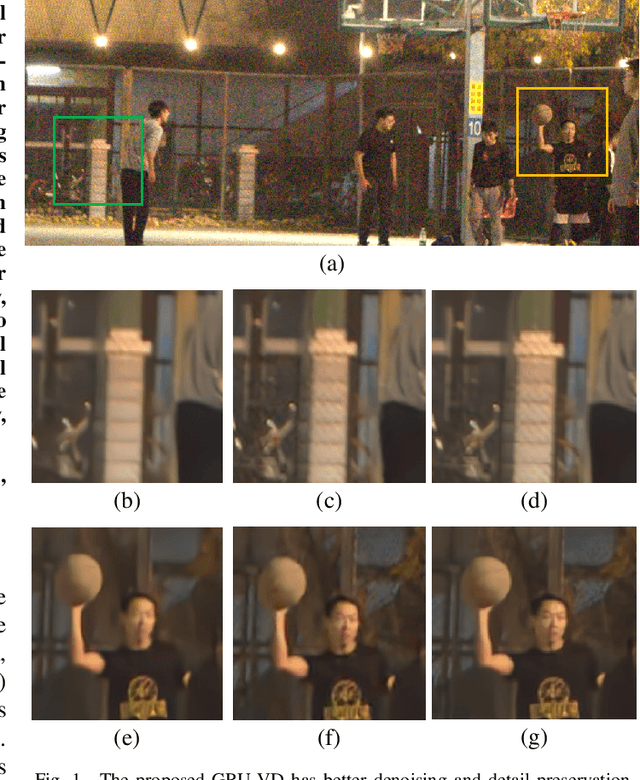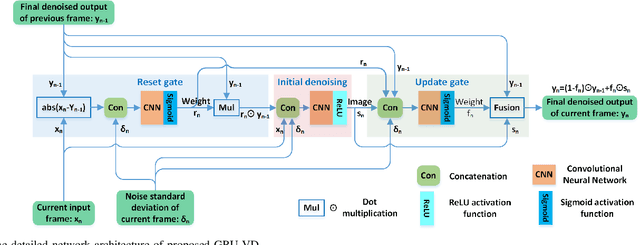Gated Recurrent Unit for Video Denoising
Paper and Code
Oct 17, 2022



Current video denoising methods perform temporal fusion by designing convolutional neural networks (CNN) or combine spatial denoising with temporal fusion into basic recurrent neural networks (RNNs). However, there have not yet been works which adapt gated recurrent unit (GRU) mechanisms for video denoising. In this letter, we propose a new video denoising model based on GRU, namely GRU-VD. First, the reset gate is employed to mark the content related to the current frame in the previous frame output. Then the hidden activation works as an initial spatial-temporal denoising with the help from the marked relevant content. Finally, the update gate recursively fuses the initial denoised result with previous frame output to further increase accuracy. To handle various light conditions adaptively, the noise standard deviation of the current frame is also fed to these three modules. A weighted loss is adopted to regulate initial denoising and final fusion at the same time. The experimental results show that the GRU-VD network not only can achieve better quality than state of the arts objectively and subjectively, but also can obtain satisfied subjective quality on real video.
 Add to Chrome
Add to Chrome Add to Firefox
Add to Firefox Add to Edge
Add to Edge